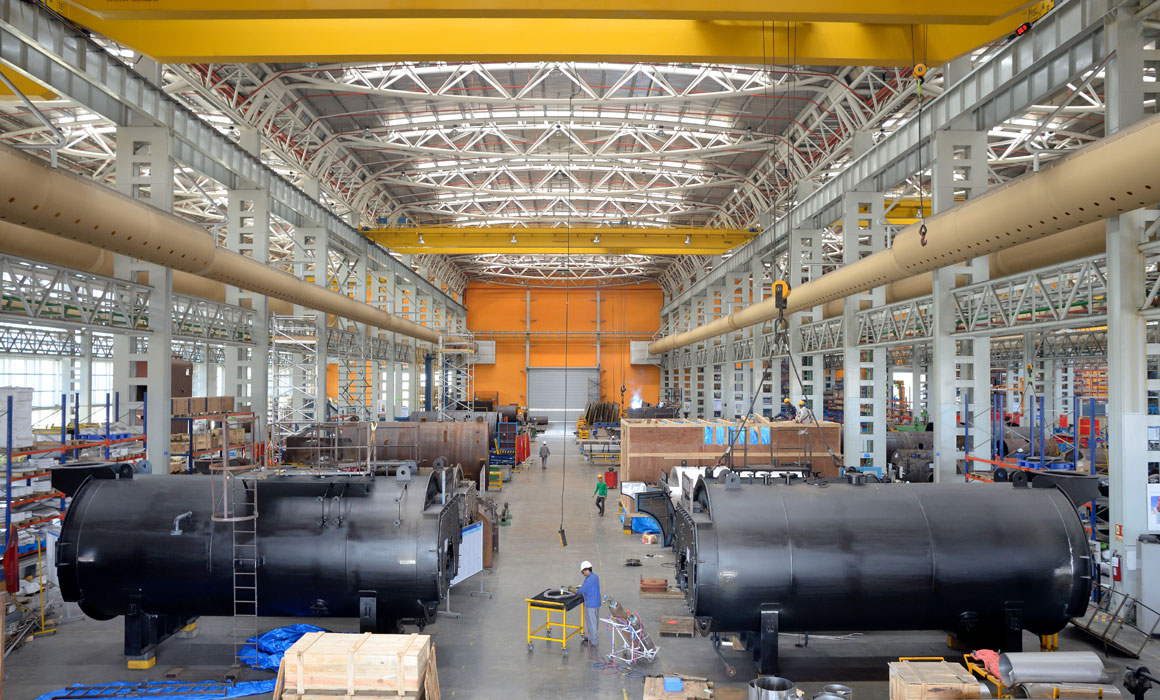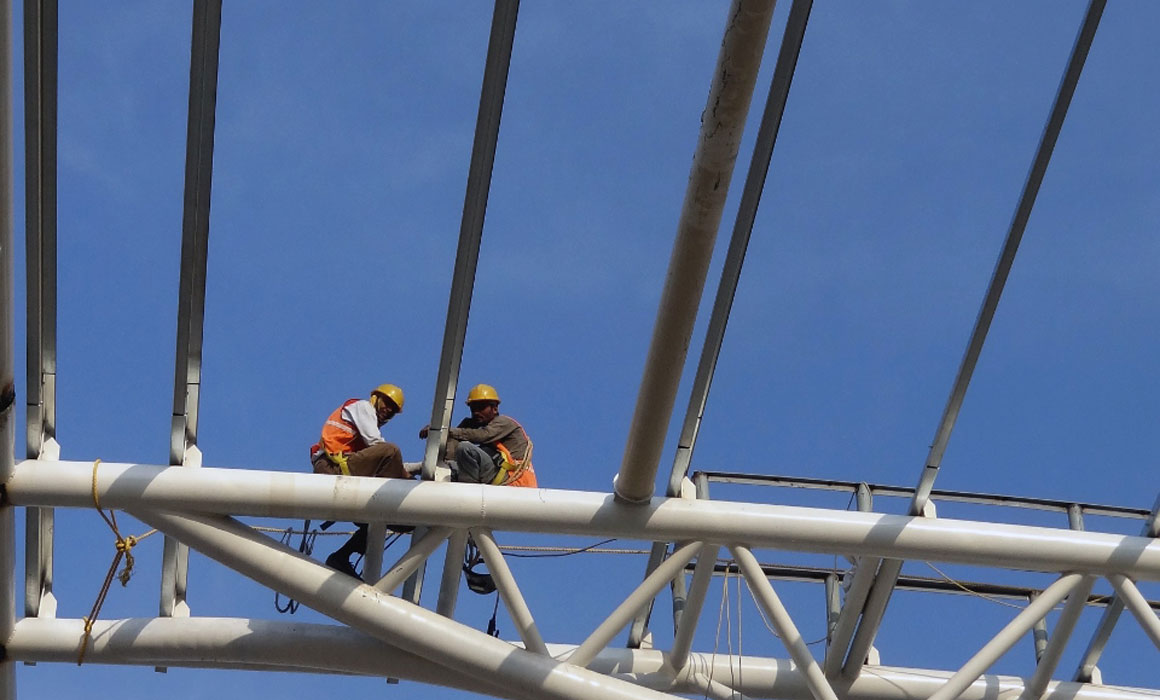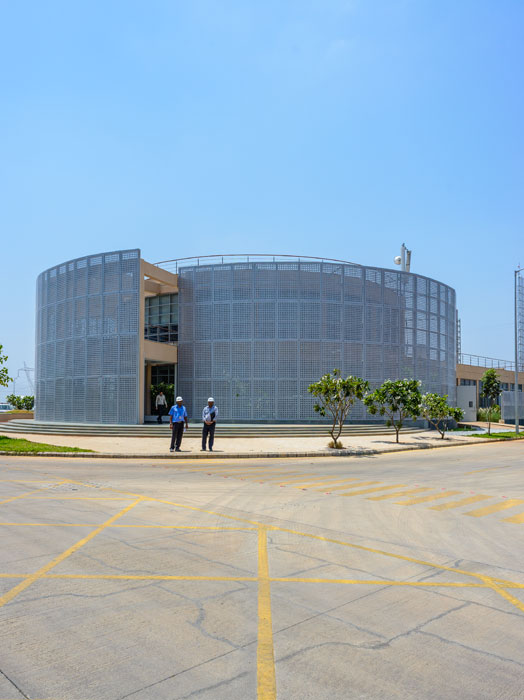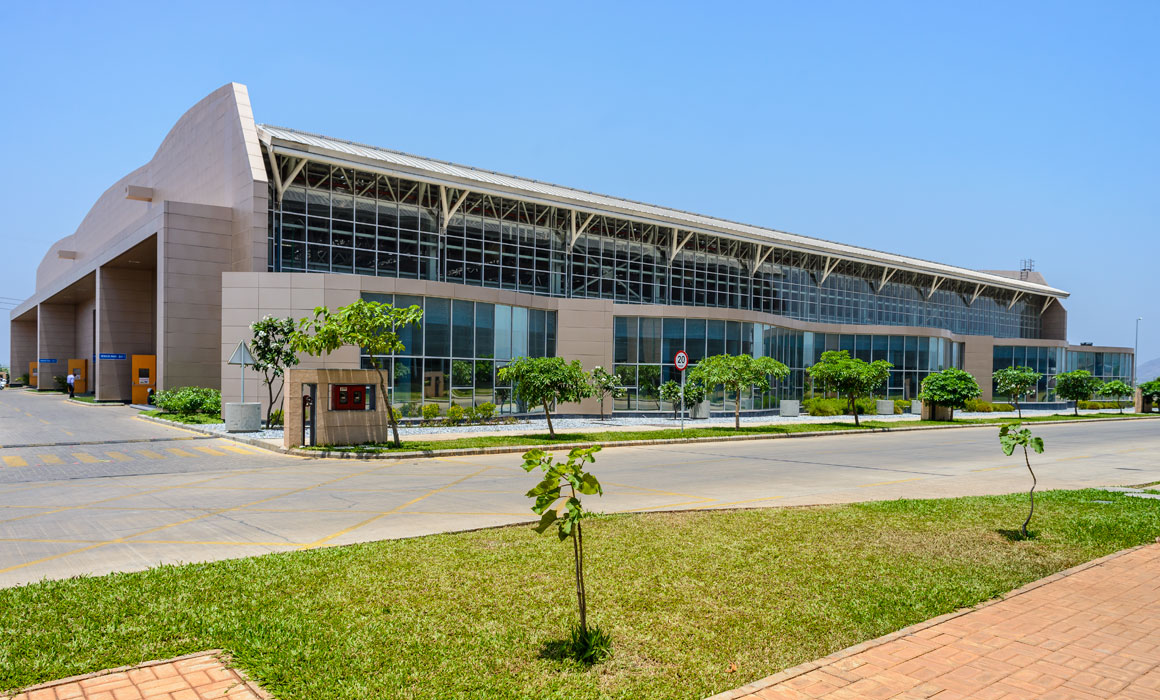
Location: Chakan, Maharashtra, India
Status: 2010-Ongoing
The Forbes family, doyens of modern industry in India, have been working out of antiquated, inefficient and chaotic structures, that grew according to need in an ad hoc manner over decades. Typical of the industrial landscape of the Pune metropolitan region, this dulling grey urban landscape arose across the industrial belt, which houses a mixture of Indian and multi-national industries. Sensing the need for change the clients and the architects conceptualized the idea of factories turning into creative work-studios of highly qualified thinker-doers, using high-tech manufacturing. Natural light and trees growing on the workshop floors were amongst the new initiatives employed.
The concept of pollution free, efficient work pavilions, set in a green garden ambiance, was jointly conceived by the architect and the clients, who emerged as patrons of the arts in the process.

The Forbes Marshall Industrial Park, at the new Chakan industrial city in the Pune Metropolitan Region, was conceived to mirror the Forbes Marshall group’s ambitions for high technological and global standards. It was also envisioned as a testament to a social commitment to safety, hygiene and sustainability. Spread over fifty acres, the industrial campus focuses on a central green spine of gardens, water bodies and breakout areas. A new corporate headquarters structure anchors this large space to the eastern entry side, with production units in the form of vast pavilions aligning the gardens. Ancillary activities, like power supply, transport, security, health care, energy management, storage and an extensive Vendor’s Park feed into the production units from a lineal corridor along the southern belt of the site.
The first phase of the campus is composed of two large manufacturing pavilions supported by utility structures and linking roads. Each production pavilion has its integral supporting office spaces facing the garden views in the central garden spine. The work areas are conceived as creative studios, mirroring production flow channels, bringing daylight from vast skylights onto greenery on the working floors.

The intentions and strategies of the design fall within several inter-connected layers of purpose. At a very basic level, each pavilion on the site is a machine for creating national wealth in its own right and, as such, must be functional, efficient, durable and easy to maintain. At another level, all of the structures are players within an overall campus and they have to be situated within that campus system in a manner that optimizes synergies amongst the various parts. On another level the experience of the individual worker and their team members was conceptualized as something green, light and human.

At all times the strategy was to create an urban landscape that is lively, green and welcoming.
The boiler workshop is the first structure to be completed, covering a footprint of over twenty-six thousand square meters, and reaching twenty-three meters in height, materializing as a cathedral for manufacturing processes. The roofing of lightweight aluminum composite sheets, floats on lightweight steel trusses, designed by the architect, over this volume. Skylights running parallel over these triangular trusses illuminate the pavilion floor. The south facade is composed of a vast aluminum jaali, filtering sunlight through a secondary glass wall. This filtered light, combined with the skylights, ensures minimal use of artificial light over the entire workspace. The north edge of the boiler workshop is composed of ground plus first level office units, sanitary facilities, break-out areas, cafes, training areas and amenities overlooking the pavilion’s working spaces, on one side and facing the green campus spine on the other. A playful curved glass wall tempers the edges of these human scale, working areas.

The architects’ ambition was for the most unskilled worker and the most senior manager to feel a sense of pride in their place of work. To quote,
“Positive emotions of pleasant anticipation should swell up as team members approach their place of work each morning. A visitor should feel they are within a vast garden precinct when they reach the Forbes Marshall campus. While knowing it is a global enterprise, signifiers must inform them that they are in a place called Pune.”













